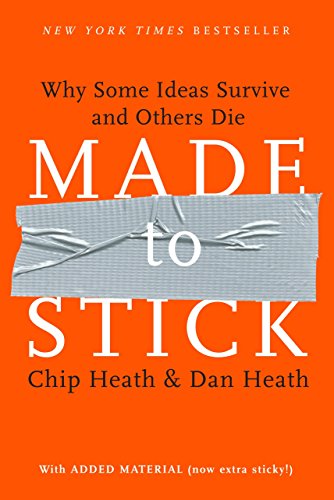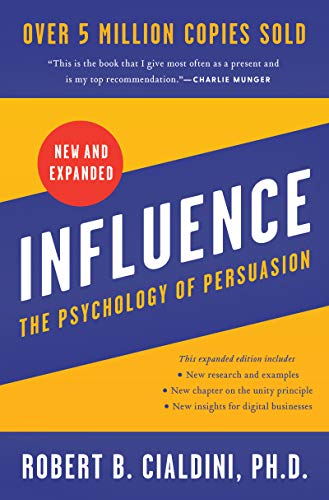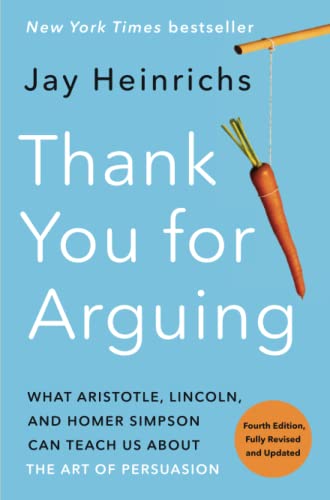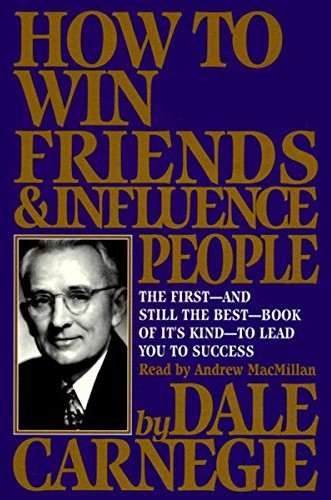“The only way to influence people is to talk in terms of what the other person wants,” said Dale Carnegie. In this dance of life, understanding persuasion is akin to learning the steps that lead to success. Imagine you could master the art of influence, gracefully navigating any conversation or negotiation with ease and success. This power rests not in manipulation, but in mastering the art of persuasion. It’s a dance, a give-and-take that requires not just learning the steps but understanding the rhythm. This article invites you on a journey to explore the beauty of this dance.
1. The Dual Nature of Persuasion
Is persuasion a skill or an art? Carl Jung believed that “Art is a kind of innate drive that seizes a human being and makes him its instrument.” This age-old question invites us to ponder on the dual nature of persuasion. It’s a skill because, with mindful practice, one can learn the techniques and strategies that drive persuasive communication. But it transcends into an art form when it starts to flow intuitively, painted with the colors of creativity, nuance, and empathy. Persuasion isn’t a tool for control, but a bridge to reach mutual agreement and deeper understanding.
Key Takeaway: Persuasion is both an art and a skill, thriving on practice and intuitive understanding.
Diving Deeper into the Dual Nature of Persuasion
“Made to Stick” by Chip Heath and Dan Heath.
This book showcases the duality of persuasion, understanding it as both an art and a skill. The Heath brothers use engaging narratives and examples to make complex psychological concepts accessible. This book will help readers understand why certain ideas stick and others don’t, offering practical advice on how to make their own messages “sticky.
Why it stands out
Its emphasis on crafting memorable and impactful messages makes it unique
Favorite quote
“The most basic way to get someone’s attention is this: Break a pattern.”
2. Journey into the Human Mind: Deciphering Persuasion
Our minds are a complex web of emotions, thoughts, and biases. Recognizing this, social psychologist Robert Cialdini unveiled six principles of persuasion that elegantly capture these intricacies.
- Reciprocity is our inherent urge to return a favor. It’s the unseen force that compels us to reciprocate when someone does something nice for us. In the realm of persuasion, it means giving before expecting to receive, nurturing a cycle of goodwill.
- Commitment and Consistency reflects our desire for coherence in our actions and beliefs. Once we commit to an idea, we strive to remain consistent with it. In persuasion, it means fostering commitment in small steps that build up over time.
- Social Proof is our inclination to follow the crowd. We feel safer in numbers, seeking validation in what others are doing. In persuasion, it involves using testimonials or endorsements to enhance credibility.
- Authority plays on our respect for expert opinion. We listen to those we perceive as knowledgeable or experienced. In persuasion, it’s about positioning yourself as an authority in your field.
- Liking underscores the simple fact that we’re more likely to be influenced by people we like. It’s about building rapport and common ground. In persuasion, it means fostering genuine connections with your audience.
- Scarcity exploits our fear of missing out. We assign more value to things that are scarce or unique. In persuasion, it’s about illustrating the exclusivity and urgency of your offer.
Each principle mirrors a deep-seated human tendency, reminding us that successful persuasion isn’t about manipulation, but about fostering a genuine and respectful alignment with these human tendencies.
Key Takeaway: Cialdini’s principles of persuasion resonate with our core human tendencies, bridging respect and understanding.
Diving Deeper into the Six Principles of Persuasion
“Influence The Psychology of Persuasion” by Robert Cialdini.
This is a seminal work in understanding the principles of persuasion. Cialdini delves into why people say “yes” and offers practical techniques for how to ethically influence others.
Why it stands out
This book’s rigorous scientific approach, combined with real-life examples, sets it apart.
Favorite quote
“People seem to be more motivated by the thought of losing something than by the thought of gaining something of equal value.”
3. Understanding Persuasion: A Lesson from Aristotle
Thucydides famously stated, “The ultimate form of power is persuasion.” Aristotle, the revered philosopher, and arguably the father of persuasion, presented a triadic model of persuasion that still resonates today: ethos, pathos, and logos.
- Ethos is about credibility and ethics. It pushes us to be genuine, to respect truth, and to uphold integrity. It means fostering an image that invites trust and respect.
- Pathos is about emotional resonance. It’s an acknowledgment that we’re emotional beings and that our feelings shape our perspectives and decisions. It’s about understanding and aligning with these emotions, not exploiting them.
- Logos is about logical reasoning. It calls for arguments grounded in evidence, facts, and logic. It’s about fostering understanding through shared reasoning, not steamrolling opinions.
For Aristotle, persuasion was not a power play; it was a dance between speaker and listener, shaped by credibility, emotion, and logic.
Key Takeaway: Aristotle’s ethos, pathos, and logos model fosters a dance between speaker and listener, governed by credibility, emotion, and logic.
Diving Deeper into Aristotle’s Triadic Model of Persuasion
“Thank You for Arguing” by Jay Heinrichs
The book offers an accessible and entertaining introduction to classical rhetoric, including Aristotle’s ethos, pathos, and logos.
Why it stands out
It combines classical rhetorical strategies with modern examples, from politics to pop culture, to illustrate principles of persuasion.
Favorite quote
“Switch your perspective, and the argument changes.”
4. The Practicalities of Persuasion
Joseph Conrad observed, “He who wants to persuade should put his trust not in the right argument, but in the right word.” Persuasion isn’t a theoretical concept; it’s a practical tool that we wield in our daily interactions. How do we learn it? Like any skill, it begins with understanding the foundational concepts and models. But true mastery blooms in the field, through the highs and lows of real-world interactions.
Who is the easiest to persuade? Often, it’s those who trust and respect us, an insight that underlines the power of ethos. But with such power comes responsibility – to guide without exploiting, to influence without manipulating.
The hardest persuasion, on the other hand, often involves changing deeply ingrained beliefs or persuading someone highly resistant. It’s a challenge that demands empathy, active listening, and patience.
Key Takeaway: Mastering persuasion involves strategic language choice, fostering trust, empathetically tackling resistance, and guiding without manipulation. It is a practical skill refined through real-world interactions.
Diving Deeper into the Practicalities of Persuasion
“How to Win Friends and Influence People” by Dale Carnegie
A classic in its field, Carnegie’s book provides practical advice on how to navigate human relationships, empathize with others, and influence people without manipulating them.
Why it stands out
The book’s enduring popularity is testament to its timeless advice, relevant to all who seek to improve their interpersonal skills.
Favorite quote
“You can make more friends in two months by becoming interested in other people than you can in two years by trying to get other people interested in you.”
Final Thoughts
Mastering persuasion is more than just learning a skill—it’s embracing a universal language that resonates at the core of human interaction. Remember, each interaction is an opportunity to foster empathy, respect, and mutual understanding. With the insights and techniques shared in this article, you’re now ready to join the dance of persuasion, engaging in a more meaningful and impactful way
Frequently Asked Questions (FAQ)
To deepen your exploration into the realm of persuasion, here are some commonly asked questions that can enrich your understanding.
- Q: What does it mean to perceive persuasion as both an art and a skill?
A: The concept emphasizes the two dimensions of persuasion. Skill refers to mastering techniques of effective communication, which comes with knowledge and practice. Art, on the other hand, signifies the creative and intuitive aspect, which involves understanding human emotions, empathy, and effectively using language to weave compelling narratives. - Q: How does the book “Made to Stick” illustrate the art and skill of persuasion?
A: “Made to Stick” by the Heath brothers explores the science behind why certain ideas persist and others don’t. They provide practical strategies to make messages memorable and impactful, hence ‘sticky’. This involves making them simple, unexpected, concrete, credible, emotional, and using stories, thus aligning the principles of effective persuasion. - Q: Can you expand on an example of using Cialdini’s principles of persuasion in real-life situations?
A: Consider the principle of ‘reciprocity’. Suppose you’re a manager and you’ve supported an employee during a personal crisis. This act of kindness may induce the employee to work harder and show loyalty towards you and the organization. This is reciprocity in action – a persuasive strategy where you give first in order to receive later. - Q: How can Aristotle’s ethos, pathos, and logos model be applied practically in the modern business environment?
A: In a business presentation, ‘ethos’ could be established by demonstrating your qualifications and past successes. ‘Pathos’ could be incorporated by sharing a moving story about why the business proposal matters. ‘Logos’ can be demonstrated by presenting solid data and logical arguments supporting your proposal. - Q: What specific practical strategies does Dale Carnegie propose in his book to enhance persuasion skills?
A: Carnegie’s book is a manual for building relationships that foster influence. Key strategies include showing genuine interest in others, remembering people’s names, encouraging others to talk about themselves, listening attentively, and discussing your own mistakes before criticizing others. These practices aim at winning people’s trust and respect, an essential foundation for persuasion. - Q: What is the significance of ‘social proof’ in Cialdini’s principles and how can it be utilized in marketing?
A: ‘Social proof’ highlights our tendency to follow the crowd, meaning we find comfort in what’s popular or endorsed by others. Marketers often utilize this principle by showcasing customer testimonials, celebrity endorsements, or large numbers of users to enhance their product’s appeal and credibility. - Q: How can Aristotle’s principle of ‘logos’ be effectively used in persuasive writing?
A: ‘Logos’ involves logical reasoning backed by evidence. In persuasive writing, it could involve presenting statistics, facts, or logical arguments to support your claims. A well-reasoned argument with supportive evidence helps convince the reader of your viewpoint. - Q: How can ‘scarcity’ as a principle of persuasion play out in an e-commerce setting?
A: ‘Scarcity’ plays on the fear of missing out. In e-commerce, it could be used by showing limited stock, countdown timers, or exclusive products, which can induce customers to make quick purchase decisions. - Q: What are practical ways to apply the ‘4 C’s’ model of persuasion in a professional setting?
A: The ‘4 C’s’ – clarity, credibility, content, and context, can guide professional communication. Clarity involves communicating your ideas plainly and effectively. Credibility can be built by showcasing expertise and reliability. Content involves offering substantial, well-researched information. Finally, understanding the context ensures that your communication aligns with the situation




